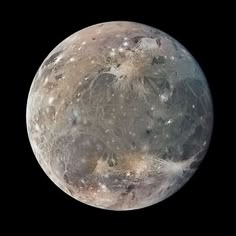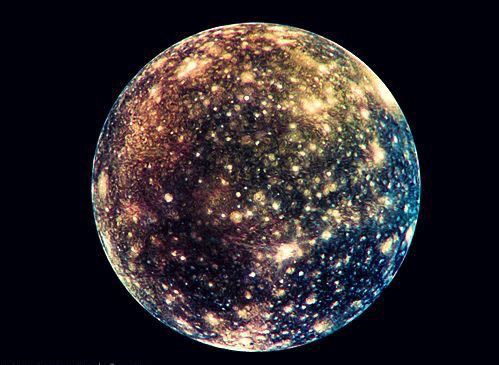
Ganymeade

Ganymede is the largest moon in the solar system, 8% larger than the planet Mercury! Ganymede is composed of about equal amounts of silicate rock and water ice, with an iron-rich, liquid core. A saltwater ocean is believed to exist nearly 200km below Ganymede's surface, sandwiched between layers of ice. The satellite has a thin oxygen atmosphere that includes O, O2 and possibly O3 (ozone). Ganymede’s surface is composed of two main types of terrain. Dark regions, saturated with impact craters and dated to four billion yearsago, cover about a third of the satellite. Lighter regions, crosscut by extensive grooves and ridges and only slightly less ancient, cover the remainder. The cause of the light terrain's disrupted geology is not fully known, but it was likely the result of tectonic activity brought about by the gravitation forces (i.e. tidal heating) by Jupiter.Ganymede is the only satellite in the solar system known to possess a magnetosphere (protective magnetic shield), likely created through convection within the liquid iron core. The meager magnetosphere is buried within Jupiter's much larger magnetic field and connected to it through open field lines. Whether the satellite has an ionosphere associated with its atmosphere is unresolved


